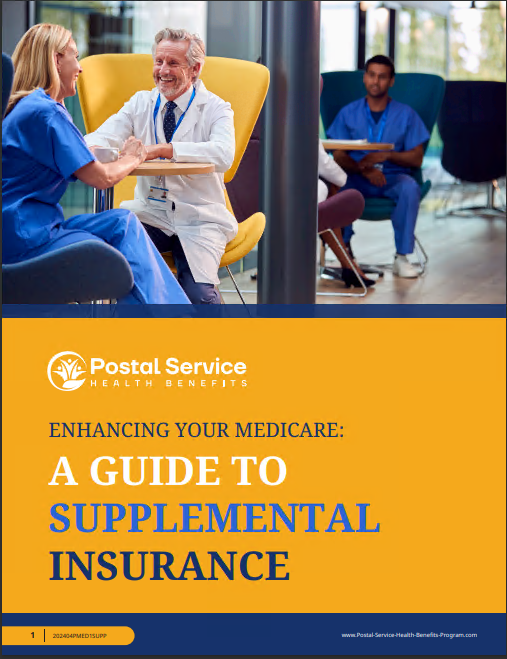Key Takeaways
-
The new Postal Service Health Benefits (PSHB) program launching in January 2025 will replace FEHB for postal workers, offering tailored healthcare options.
-
It’s crucial to review the PSHB plan offerings and understand Medicare integration requirements to maintain coverage.
A New Era in Postal Worker Health Benefits
Change is on the horizon for postal workers, with the new Postal Service Health Benefits (PSHB) program officially rolling out in January 2025. If you’re a USPS employee, annuitant, or eligible family member, this shift marks a significant departure from the Federal Employees Health Benefits (FEHB) program you’ve likely relied on for years. But don’t worry—we’re here to help you navigate the ins and outs of this transition, so you can make informed decisions for your health and wallet.
Why the Switch to PSHB?
The PSHB program is part of the Postal Service Reform Act of 2022. Its primary goal? To provide a health benefits system specifically designed for postal employees and retirees while addressing the financial sustainability of the USPS. The move also simplifies the alignment of health benefits with Medicare for eligible retirees, reducing long-term healthcare costs for both individuals and the USPS.
This change impacts all USPS employees and annuitants currently enrolled in FEHB. By transitioning to PSHB, postal workers will gain access to a health benefits program that better reflects their unique needs. However, it’s important to know how this shift affects your options and responsibilities.
Key Dates You Need to Know
To prepare for this major change, keep these key dates in mind:
-
November 11 to December 9, 2024: Open Season for PSHB enrollment. This is your chance to review available plans and make changes to your coverage.
-
January 1, 2025: The PSHB program officially replaces FEHB for postal workers. Changes made during Open Season take effect on this date.
If you’re already enrolled in FEHB, don’t worry about losing coverage. You’ll be automatically transferred to a corresponding PSHB plan. However, you’re encouraged to review your new plan details to ensure it meets your needs.
Understanding PSHB Plan Options
PSHB will offer a variety of plans, including options for self-only, self-plus-one, and family coverage. These plans will differ in terms of premiums, deductibles, and out-of-pocket maximums. While specific plan details will be available closer to Open Season, it’s essential to review your choices carefully.
What Should You Look For?
When evaluating your options, consider:
-
Coverage Needs: Does the plan include your preferred healthcare providers and necessary services?
-
Cost Considerations: Review premiums, deductibles, and out-of-pocket limits.
-
Family Requirements: Ensure your dependents are covered if needed.
The Medicare Connection: What Retirees Should Know
If you’re a postal retiree or nearing retirement, understanding how PSHB integrates with Medicare is crucial. Starting in 2025, Medicare-eligible postal retirees and family members must enroll in Medicare Part B to maintain PSHB coverage. This requirement applies to those retiring after January 1, 2025.
Key Medicare Integration Points:
-
Exceptions: Retirees who left USPS service before January 1, 2025, and are not already enrolled in Medicare Part B are exempt from this requirement.
-
Coordination of Benefits: Medicare becomes the primary payer, with PSHB covering additional costs. This coordination often reduces out-of-pocket expenses.
-
Enrollment Deadlines: Missing the Medicare Part B enrollment deadline could lead to penalties and gaps in coverage.
For those not familiar, Medicare Part B covers outpatient services, doctor visits, and preventive care. The annual premium for 2025 is $185, with a deductible of $257. Understanding these costs is essential when budgeting for retirement.
How PSHB Differs from FEHB
At its core, PSHB builds on the structure of FEHB but adds elements tailored specifically to postal workers. Key differences include:
-
Targeted Plans: PSHB plans are designed with postal workers in mind, potentially offering better coverage for occupational health needs.
-
Medicare Mandates: Greater emphasis on integrating Medicare for retirees.
-
Financial Sustainability: Lower costs for USPS, which could lead to long-term stability for the program.
Despite these changes, the government contribution towards premiums will remain consistent, ensuring affordability.
Preparing for Open Season
The Open Season from November 11 to December 9, 2024, is your opportunity to:
-
Explore available PSHB plans.
-
Compare coverage, costs, and provider networks.
-
Make adjustments to your enrollment, if necessary.
If you’re satisfied with your automatically assigned plan, you can do nothing and still maintain coverage. However, reviewing your options ensures you’re making the best choice for you and your family.
Tips for Navigating the Transition
Transitioning to a new health benefits program can feel overwhelming, but these tips can help:
-
Start Early: Familiarize yourself with PSHB details as soon as they’re available.
-
Use Online Tools: Utilize plan comparison tools to assess your options.
-
Ask Questions: Reach out to USPS HR or benefits specialists for clarification.
-
Review Medicare Requirements: If you’re eligible, ensure your Medicare Part B enrollment is complete.
-
Educate Your Family: Make sure all covered members understand the changes.
Common Questions About PSHB
Will my coverage change significantly?
For most, the transition will be seamless, with similar coverage levels to FEHB. However, reviewing plan details is critical to avoid surprises.
What happens if I’m not eligible for Medicare?
Non-Medicare-eligible retirees will still have access to PSHB plans but may face higher out-of-pocket costs compared to those with Medicare.
Can I keep my current doctors?
This depends on the network of your chosen PSHB plan. Reviewing provider directories during Open Season will confirm if your doctors are included.
Financial Considerations
The cost of healthcare is a major concern for many postal workers and retirees. While PSHB aims to maintain affordability, it’s important to:
-
Budget for Premiums: Premiums will vary by plan, so choose one that fits your financial situation.
-
Account for Medicare Costs: If you’re enrolling in Part B, include its premium and deductible in your calculations.
-
Plan for Out-of-Pocket Expenses: Be aware of deductibles, copayments, and coinsurance.
The Big Picture
The introduction of PSHB marks a significant shift for USPS employees and retirees, but it’s also an opportunity to secure tailored health benefits. By understanding the program’s nuances and staying proactive during Open Season, you can ensure a smooth transition.
A Step Toward a Healthier Future
Navigating the transition to PSHB may seem daunting, but with the right preparation, it can be a seamless process. Take the time to explore your options, understand your responsibilities, and make informed choices that suit your healthcare needs. The January 2025 rollout is more than a change—it’s a chance to align your health benefits with your unique needs as a postal worker.







